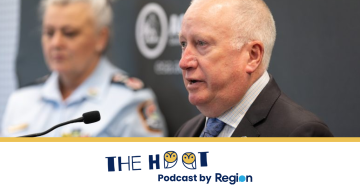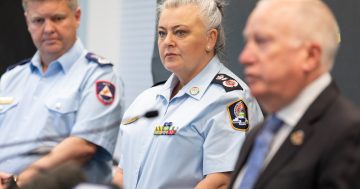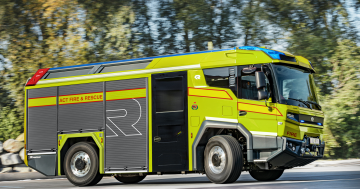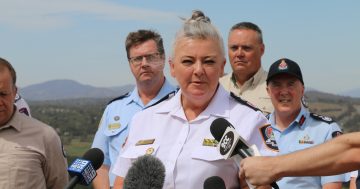
The Orroral Valley fire burnt around a quarter of the ACT. Photo: Gary Hooker ACT RFS via ESA Twitter.
Even moderate fires will be a struggle to fight during the pandemic as COVID-19 has the ability to incapacitate units and prevent assistance arriving from overseas, the bushfire royal commission has heard.
The ACT Emergency Services Agency (ESA) admitted that it has been working on worst-case scenario contingency plans where the Territory would not be able to rely on resources and aid from other jurisdictions.
“We are planning for the worst-case scenario, which is that we may not be able to rely on cross-border relationships subject to quarantine requirements, and just workforce availability,” ESA Commissioner Georgeina Whelan told the Royal Commission into National Natural Disaster Arrangements.
It’s a concern shared by the Acting Chief Officer of the ACT Rural Fire Service (RFS), Rohan Scott, who also appeared at the royal commission.
“There has been some concern from volunteers that if they were to deploy to assist another jurisdiction, what would then be the quarantine arrangements on their return from a cross-border operation?
“With regard to a bigger protracted incident, if we were required, we would not do a hot changeover of vehicles in the field. Those vehicles would go back to the station and we would send out fresh vehicles,” he said.
The spread of COVID-19 could also impede Australia’s aerial capacity and firefighting capability during the next fire season because of quarantine requirements, exacerbating a scarcity of resources as fire seasons in the northern and southern hemispheres begin to overlap.
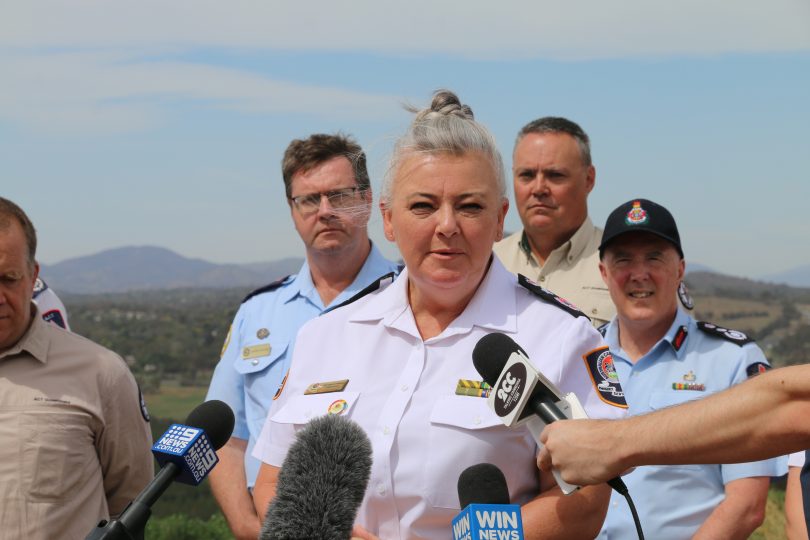
ESA Commissioner Georgeina Whelan says COVID-19 may impact the ACT’s ability to receive support during a fire. Photo: Dominic Giannini.
Over the course of the black summer fires, a record-breaking 1000 firefighters from New Zealand, Canada and the United States came to Australia to help local forces, the royal commission was told.
Australia is also heavily reliant on sourcing fire-fighting aircraft internationally.
“We have had difficulty in getting aircraft, particularly in that early part of the season, which predominantly probably more affects Queensland and NSW,” Commissioner of the NSW RFS Rob Rodgers said.
“I think that just goes to highlight the risk of the country relying on overseas-sourced machines.
“If you suddenly start getting a few people that had confirmed COVID cases, then your assumption of who may be infected could be quite large … you could take out potentially hundreds of people who need to isolate … in case they are infectious.”
Substantial personnel absences and a disease spread with a high rate of infection would “affect the ability to maintain an adequate response” in a moderate fire season, the royal commission was told.
While the fire season officially starts on 1 October, some parts of NSW could see their fire seasons start as early as 1 August. The South Coast’s upcoming fire season is also expected to be higher than average around unburnt areas because of “ongoing dry conditions and a reduced chance of above-median rainfall,” according to the seasonal bushfire outlook.
Social distancing requirements have already impeded some hazard reduction activities over winter while some older and more vulnerable volunteers are being asked to step back from volunteering for the time being.












